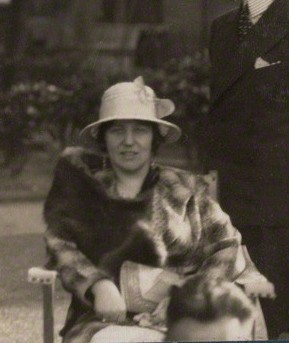Helen Hope Mirrlees was born in 1887 to Scottish parents William Julius Mirrlees, owner of a successful South African sugar business, and Lina Mirrlees, née Moncrieff, of Scotland’s aristocratic Moncrieff clan. Hope received a formal education at the prestigious St. Leonard’s girls school in St. Andrews and was presented at court as a debutante at the age of nineteen or twenty. She briefly attended the Royal Academy of Dramatic Art studying under the auspices of the actress Mrs. Patrick Campell, but found herself more interested in classics than drama. In 1910 she went up to Newnham College, Cambridge, one of the university’s two women’s colleges, to study classics. At Newnham she began an intimate relationship (the nature of which has been debated by scholars) with famed classicist Jane Ellen Harrison that lasted until Harrison’s death in 1928.
In 1913 Mirrlees left Newnham and travelled to Paris with her friend Karin Costelloe, who went on to marry Virginia Woolf’s brother Adrian Stephen in October of that year. During the war years Mirrlees and Harrison went back and forth between the U.K. and Paris, where Harrison was treated by a French heart doctor. They stayed on the Left Bank at the Hotel Elysée, 3 rue de Beaune and studied Russian at the nearby École des Langues Orientales.
In 1919, Mirrlees published her first novel, Madeleine: One of Love’s Jansenists (W. Collins Son & Co, 1919), a historical novel set in the world Madame de Scudéry’s 17th century Paris salon. Virginia Woolf gave the novel a tepidly positive review in the Times Literary Supplement and in a private letter described it as “all sapphism so far as I’ve got—Jane and herself” (VW letters v. II pp. 390-91). The Hogarth Press published Paris: A Poem the following year.
In 1922 Harrison retired from Cambridge and by November the pair had settled in rooms at the American Women’s University Club, 4 rue de Chevreuse, Montparnasse, where they lived until 1925. During this time, Mirrlees published The Counterplot (W. Collins Son & Co, 1924), her only novel set in the present day. According to Mirrlees’ sign-off on the last page it was completed at 4 rue de Chevreuse [the American Women’s University Club], 1923.
In 1925 the pair returned to London and lived at 11 Mecklenburgh Street at Bloomsbury’s Eastern edge until Harrison’s death from Leukemia in April 1928. Mirrlees would go on to survive Harrison by fifty years. In the mid 1920s, Mirrlees and Harrison collaborated on two translations from Russian, the language they both studied in Paris several years earlier. In 1924, the Hogarth Press published The Life of the Archpriest Avvakum by Himself (Hogarth Press, 1924), Mirrlees and Harrison’s translation of the autobiography of a 17th century Russian priest, with an introduction by D.S. Mirsky. Two years later Mirrlees and Harrison published a collection of Russian folktales in translation, The Book of the Bear (Nonesuch Press, 1926), including three stories by their friend Alexei Remizov. In 1926 Mirrlees published her last novel, a fantasy novel titled Lud-in-the-Mist (W. Collins Son & Co, 1926), which has gone through several printings and been translated into Spanish, French, German, and Dutch. Mirrlees’ fantasy readership has played a large role in her recovery—leading science fiction and fantasy publisher Ballantine Books printed a new edition of the novel in 1970, two years before Suzanne Henig published a landmark article “Queen of Lud: Hope Mirrlees” in Virginia Woolf Quarterly.
The year after Harrison’s death Mirrlees converted to Catholicism, and for the next twenty or so years lived with her mother in South Kensington, London and later Surrey. (TS Eliot staying with them during the war?) For many years Mirrlees worked on a Harrison biography that was never published. She also planned a many volume biography of the 17th century antiquarian Sir Robert Bruce Cotton, and published the first volume as A Fly in Amber (Faber & Faber, 1962).
After her mother’s death in 1948, Mirrlees moved to South Africa, a country she had visited as a child due to her father’s business interests, and lived there for fifteen years. She returned to England in 1963, settling in the Oxford suburb of Headington, and published three slim poetry volumes in the sixties and early seventies, revised and expanded in Moods and Tensions (Amate Press, 1976). Mirrlees died in 1978 at the age of ninety-one.
by Sophia Levin

